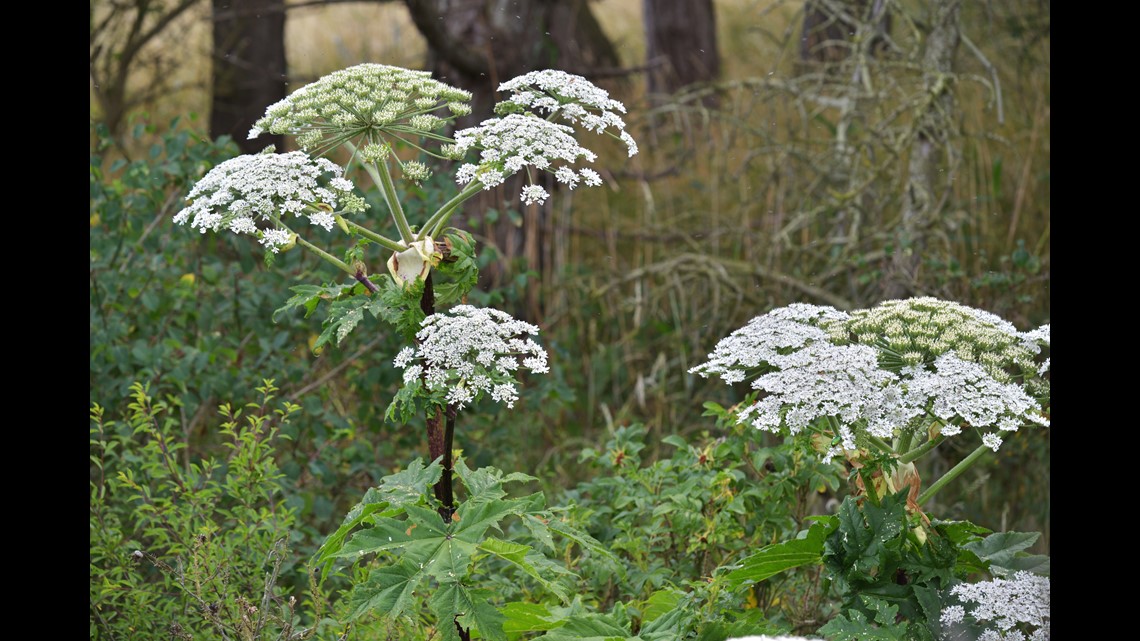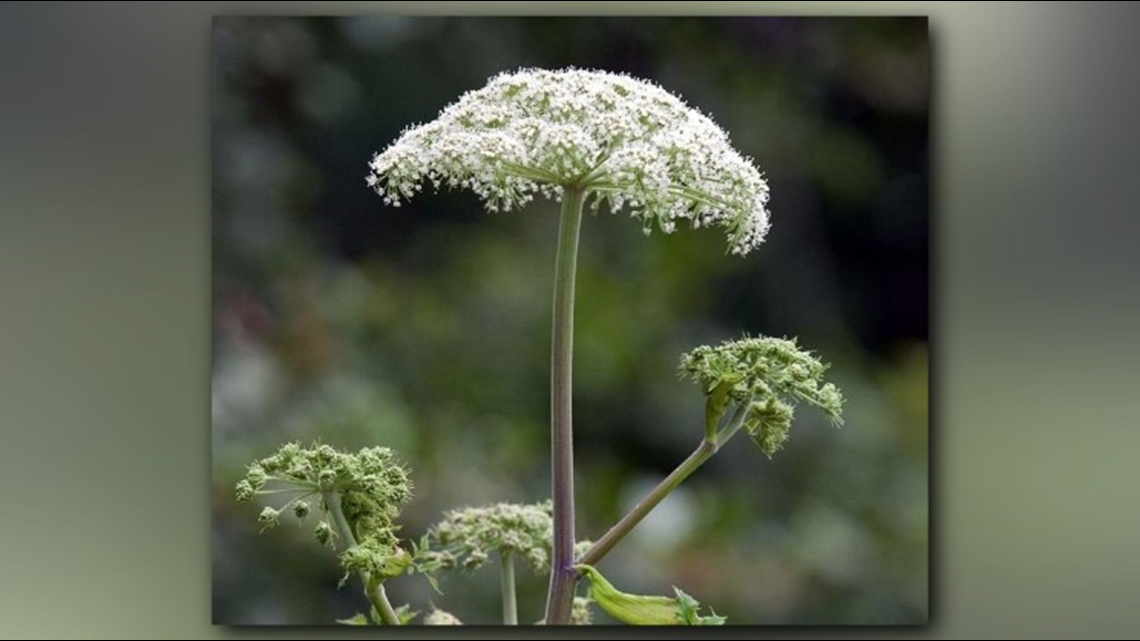Giant hogweed, a nonnative plant that can cause third degree burns and potentially blindness, is an emerging threat in Tennessee, according to the Tennessee Invasive Plant Council.
The plant grows up to 14 feet tall and the flowers atop the plan can be two-and-a-half feet wide.
The flowers are white a look similar to Queen Anne's Lace.
Neal Denton with the UT Agriculture Extension says the two weeds are in the same family, along with poison hemlock and wild parsnip.
"They have a big white flower, kind of umbrella flower head," Denton said. "Giant hogweed is the biggest of them all."
Denton says giant hogweed only causes irritation at the point where skin comes in contact with the plants sap.


"If you get it on your skin and then go into the sunlight for as little as 15 minutes you can get photodermatitis," Denton said. "It basically takes the effect of the protection of your skin away from the sun and the sunlight burns your skin.
In addition to its large size, giant hogweed can be identified by purple splotches on its stem and stiff white hairs on its base.
"It will grow very quickly in the heat of the summer, so it can reach from a relatively short plan to flowering within a few weeks," Denton said.


Not only is the plant fast growing, but it has a large seed production.
"Just because this plant has been found in a few places doesn't mean that it's here in large quantities yet," Denton said. "It has a lot of seed production, so it can become a problem and they're wanting people to be aware of it, but it's not everywhere yet. So it's not something most people are going to come in contact with."

